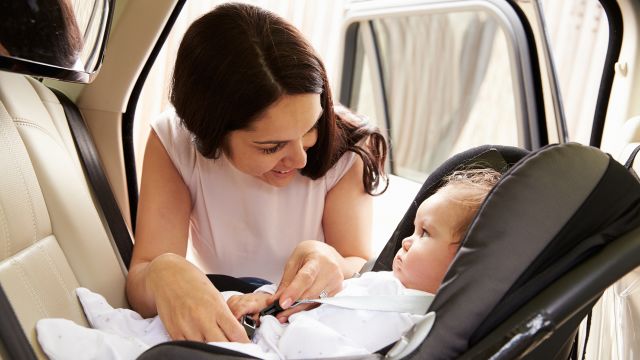Updated on January 16, 2025.
Each year in the United States, hundreds of babies and young children are killed in car accidents, according to the National Highway Traffic Safety Administration (NHTSA). Thousands more are injured.
Parents and caregivers can help lower the risk of injury and death by purchasing a reliable car seat and using it in the correct way. For babies less than 1 year old, this can reduce fatal injuries in cars by about 71 percent, the NHTSA reports. For young children between ages 1 and 4, it’s about 54 percent.
With that in mind, try these tips for car seat safety.
Choose the right car seat
Consider your child’s age, weight, and height when you’re picking out a seat. For babies, choose one that’s rear-facing. Keep them in it for as long as possible, until they reach the seat’s size limit, usually between the ages of 2 and 4 years.
When your child outgrows the rear-facing car seat, move them to a forward-facing car seat. Use it until your child is at least 5 years old and reaches the seat’s height or weight limit. At that point, kids should switch to a booster seat and use a seat belt adjusted for their size.
Not sure what kind of seat your child needs? The NHTSA child seat finder can help you decide.
Avoid car seats that:
- Are too old; look for the manufacturing date on the label
- Have been in an accident before
- Have visible damage, such as cracks or missing straps
- Have been recalled
- Are missing parts, instructions, the manufacturing date, or the model number
Install the seat correctly
Every car, truck, and SUV is different. So, make sure to read your car seat’s installation instructions carefully. Also look through the owner’s manual for your vehicle, which can help you find important parts of its belt and lock system.
To begin, place your seat in the back of your vehicle. They should never be positioned in the front seat, where air bags can deploy and cause life-threatening injuries.
Depending on the type of seat you have, you might latch it to the vehicle using tethers or anchor attachments. Or, you might thread a seat belt through a belt path. Once this is done, try to move the seat around. If it shifts more than 1 inch, tighten its straps. Make sure the seat is placed at the correct angle, as well. Young children should be slightly reclined. Many seats come with an indicator to help.
Need installation help? Reach out to a certified child passenger safety technician at SafeKids.org or call 877-366-8154. Or, visit your local police department or fire department to check. They provide this service for free.
If your family is expecting, practice taking the seat in and out of your car before bringing your baby home from the hospital. Do this whenever you buy a new seat, as well.
Seat your child properly
Follow these guidelines when securing your child in their seat.
- Always use the car seat, on every trip, no matter how short.
- Make sure the child’s back is flat against the seat.
- Remove very bulky clothes or blankets. They can be placed over the child once they’re buckled up.
- Remove other products and devices (bumpers, etc.) unless they’ve been approved by the seat manufacturer or were packaged along with the seat itself.
- For kids in car seats, place harnesses over the shoulders and buckle up across the chest, under the armpits. These should be snug but not very tight. For kids in boosters, a seat belt should fit snugly across the shoulders and lap.
Experts advise kids to ride in the back seat until age 13.
Look out for car seat recalls
From time to time, a company will discover a serious safety issue with one of its car seats and issue a recall. In 2024, for example, Nuna Baby Essentials recalled more than 600,000 RAVA car seats due to a potential problem with the harness.
To receive recall alerts, take these two steps:
- Register your car seat with the manufacturer. If the seat is recalled, they can reach out to you directly.
- The NHTSA keeps a searchable database of recalls on its website. You can search for your own model to ensure its safety and sign up for recall alerts via the SaferCar app.
If you believe your seat has an unreported safety issue, call the NHTSA’s Vehicle Safety Hotline at 888-327-4236 or fill out the car seat complaint form online.







